While many families affected by the Taoyuan Aerotropolis project are fiercely resisting forced land seizures by the government, a group of people in Japan has been resisting expropriations for nearly 50 years and has blocked Narita International Airport — the largest airport in Japan — from being completed as initially planned.
With more than 200,000 flights landing and taking off, carrying more than 30 million passengers a year, Narita International Airport in Chiba Prefecture not far from Tokyo may seem to be just like any other busy airport at first sight, but travelers may notice something unusual, such as a large sign that says “down with Narita Airport” in both English and Japanese, as well as steel towers, some with protest banners hanging from them, right outside the airport fence.
“The airport is technically unfinished, though it has been in operation for decades,” said Eiichi Koyama, editor-in-chief of Weekly Sanrizuka and a member of the Farmers’ League Against Narita Airport, standing on one of the observation towers built by activists against land expropriation for Narita airport, right outside the airport fence. “The land expropriation is not done yet.”
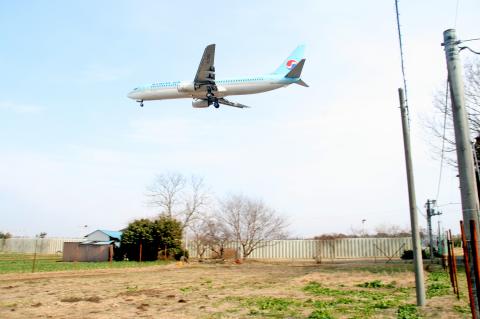
Photo: Loa Iok-sin, Taipei Times
According to the original construction plan, which was revealed in 1966, Narita International Airport was supposed to have two 4km runways, one 3.6km runway and two 2.5km runways, but only the 4km runway A had been completed when the airport was opened in 1978, which was a seven-year delay as the airport was originally scheduled to be inaugurated in 1971.
It was not until 2002 that the 2.2km runway B — which was also supposed to be 4km long — was completed. It was later expanded to 2.5km in 2009, but the construction of the rest of the runways has been postponed indefinitely.
Within and outside the airport premises, there are still two private homes, an agricultural product manufacturing plant, a Shinto shrine and farms belonging to local residents who are opposed to forced expropriation for the airport that started nearly half a century ago.
“The resistance to the land seizures began when the government first announced that a new airport would be built in Sanrizuka village in Narita,” 92-year-old Koji Kitahara, who has headed the activist league since the beginning, told the Taipei Times. “The announcement came as a surprise, because we were never consulted in advance and I believe that anyone, anywhere, would rise up against it.”
In fact, it was the village of Tomisato — about 5km away — that was first selected for the airport, but the site was later relocated to Sanrizuka due to strong opposition.
“The Cabinet believed there would be less opposition because more than half of the land in Sanrizuka belongs to the Chiba Prefecture Government and the imperial family,” Kitahara said. “So, before we were consulted or reacted, the decision to move the project to Sanrizuka was finalized.”
He added that it took the government only two weeks between the first announcement and the final decision.
“We put a lot of hope in the Emperor, we petitioned him asking him not to agree to give up Imperial lands, but the emperor let us down,” Kitahara said. “To our disappointment, he quickly agreed to give up imperial estates for airport construction.”
Despite the disappointment, Kitahara and other Sanrizuka villagers — 325 families and more than 1,000 residents — continued to petition officials at the local and central level, but all efforts were in vain.
“We petitioned the Ministry of Land, Infrastructure, Transport and Tourism, but officials told us that they had no choice and asked us to tolerate it for the good of the public,” Kitahara said.
“Since my grandfather’s time, my family has been living here in Sanrizuka as farmers, growing agricultural products organically,” said Toichi Shito, a local farmer. “This is our home, we will not give it up.”
Shito said that in addition to families that have been living in Sanrizuka for centuries, there are many families of former soldiers or overseas Japanese who were settled in Sanrizuka by the government after World War II, and that it took them decades of effort and hard labor to improve the quality of the soil.
“How is it possible for them to just give up the land?” Shito asked.
At first, villagers’ protests were rather peaceful, but they turned violent when the government authorized forcible land expropriation and eviction of residents in 1969. The seizures did not happen until 1971, the year when the airport was supposed to have been completed under the original plan.
“Police and troops moved in, trying to tear down private homes and steel towers built by protesters — including local villagers, and thousands of university students and activists from across the country — leading to violent clashes,” said Koyama, who was among the student activists who joined the resistance movement in the 1970s.
Among a series of conflicts, the most severe occurred in September 1971 when 5,300 police officers clashed with about 5,000 protesters, leading to the arrest of 475 protesters, hundreds of injuries on both sides and the deaths of three officers.
Finally, the airport inauguration was set for 1978, but only one terminal and one runway had been completed at that time — and the inauguration was further postponed, since protesters occupied the control tower on the scheduled day of the inauguration on March 26 amid tightened security measures.
Following the bloodshed in the 1970s, the protests continued, but they were non-violent and still continue today — with the two private homes, a factory, shrine and farms remaining as enclaves within the airport, blocking it from being completed.
“Politicians have continued to try and convince me to give up by offering me government positions or large compensation, but I turned down all the offers,” Kitahara said.
“The government made a mistake. It has to apologize and to fundamentally change the way it makes decisions,” he said.
Koyama agreed, saying that it was a crime by the government and giving up would mean consenting to the government’s wrongdoing.
“This is why I’ve stayed in the movement for almost 40 years,” he said.
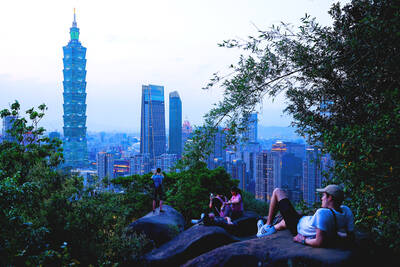
GENSLER SURVEY: ‘Economic infrastructure is not enough. A city needs to inspire pride, offer moments of joy and foster a sense of belonging,’ the company said Taipei was named the city with the “highest staying power” in the world by US-based design and architecture firm Gensler. The Taiwanese capital earned the top spot among 65 cities across six continents with 64 percent of Taipei respondents in a survey of 33,000 people saying they wanted to stay in the city. Rounding out the top five were Vietnam’s Ho Chi Minh City (61 percent), Singapore (59 percent), Sydney (58 percent) and Berlin (51 percent). Sixth to 10th place went to Monterrey, Mexico; Munich, Germany; Sao Paulo, Brazil; Vancouver; and Seoul. Cities in the US were ranked separately, with Minneapolis first at
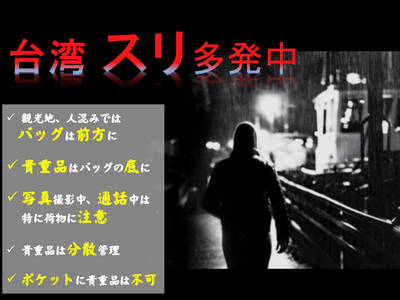
The Japan-Taiwan Exchange Association has cautioned Japanese travelers to be vigilant against pickpockets at several popular tourist spots in Taiwan, including Taipei’s night markets, the Yongkang Street area, Zhongshan MRT Station, and Jiufen (九份) in New Taipei City. The advisory, titled “Recent Development of Concerns,” was posted on the association’s Web site under its safety and emergency report section. It urges travelers to keep backpacks fully zipped and carried in front, with valuables placed at the bottom of the bag. Visitors are advised to be especially mindful of their belongings when taking photos or speaking on the phone, avoid storing wallets and
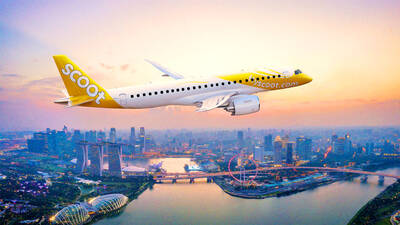
Scoot announced yesterday that starting in October, it would increase flights between Taipei and Japan’s Narita airport and Hokkaido, and between Singapore and Taipei. The low-cost airline, a subsidiary of Singapore Airlines, also said it would launch flights to Chiang Rai in Thailand, Okinawa and Tokyo’s Haneda airport between December and March next year. Flights between Singapore and Chiang Rai would begin on Jan. 1, with five flights per week operated by an Embraer E190-E2 aircraft, Scoot said. Flights between Singapore and Okinawa would begin on Dec. 15, with three flights per week operated by Airbus A320 aircraft, the airline said. Services between Singapore
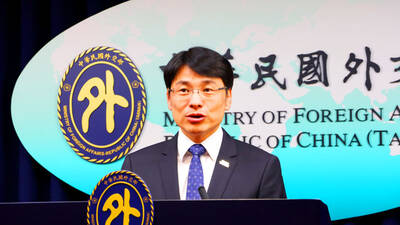
ENDORSING TAIWAN: Honduran presidential candidate Nasry Afura said that Honduras was ‘100 times better off’ when it was allied with Taipei The Ministry of Foreign Affairs yesterday said it would explore the possibility of restoring diplomatic relations with Honduras based on the principle of maintaining national interests and dignity. The ministry made the remarks in response to reporters’ questions regarding an article titled: “Will Taiwan Regain a Diplomatic Ally?” published in The Diplomat on Saturday. The article said Honduras’ presidential election in November could offer Taiwan the chance to regain an ally, as multiple candidates have promoted re-establishing diplomatic relations with Taiwan. Honduras severed diplomatic ties with Taiwan in March 2023 in favor of Beijing, but since switching its diplomatic recognition,